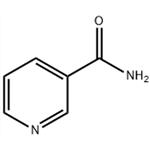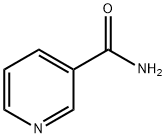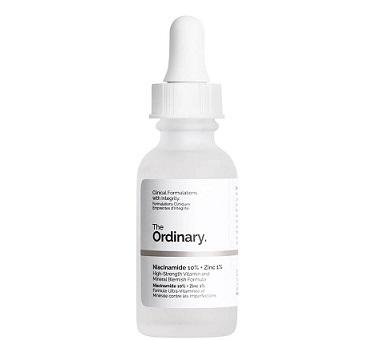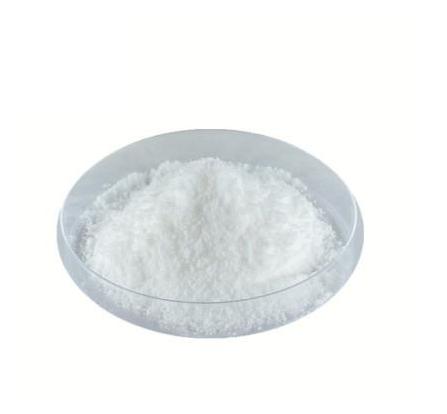Nicotinamide - Medical Applications and Role in Skin Diseases
Introduction
Niacinamide, also known as nicotinamide, is an increasingly popular component of topical cosmeceuticals. It has shown a wide variety of benefits such as improving epidermal barrier function and therefore inflammatory dermatoses, increasing protein and ceramide synthesis, and improving photoaged skin color and texture, among others. This chapter reviews the role of niacinamide in skincare and its future applications.

Background
Biochemistry and Pharmacology
Nicotinic acid and nicotinamide are the two principle forms of vitamin B3, also known as niacin. Niacin is a pyridine derivative with a carboxyl group at the 3-position; replacement of the carboxyl group (–COOH) with a carboxyamide group (–CONH2) yields nicotinamide. Niacin was first described in 1873 by Hugo Weidel while studying nicotine, and was extracted from the liver in 1937 by Conrad Elvehjem. The preparation was shown to prevent pellagra in humans and canine black tongue. The name niacin is derived from the combination of nicotinic acid + vitamin. Two very important coenzymes, nicotinamide adenine dinucleotide (NAD) and nicotinamide adenine dinucleotide phosphate (NADP) are involved in catabolic and anabolic processes respectively via hydrogen transfer reactions. NAD(P) is a coenzyme of over 200 metabolic enzymes and acts as a signal transducer as well. Nicotinamide is produced from tryptophan metabolism with 60 mg of tryptophan (along with vitamin B6, iron, and riboflavin) required to synthesize 1 mg of niacin.3 It is also obtained from the diet ( poultry, meat, fish, nuts, whole grains, eggs, dates, legumes, mushrooms, avocados, among other sources). It is rapidly absorbed in the gastrointestinal tract and excreted by the liver. Unlike nicotinic acid, systemic absorption does not cause flushing, elevation in blood pressure, pulse, or body temperature. The recommended daily allowance is 2–12 mg/day for children, 14–16 mg/day for adults, and 18 mg/day for pregnant women. Niacin status is checked through urinary markers.
Role in Skin Diseases
A deficiency of NAD and NADP is attributed to a triad of effects termed pellagra. Given the coenzymes role in metabolism, pellagra affects tissues with high cell turnover rates (skin, gut) and those with high energy demands (brain).4 Classically, it consists of diarrhea, dementia, dermatitis, and if severe enough, may eventuate in death. The classic pattern may not be evident and only some features may manifest. Pellagra is endemic in the developing world and unfortunate populations afflicted by war or famine. It is quite rare in the developed world and it is usually associated with alcoholism due to a combination of intestinal malabsorption and poor diet. Other rare causes of pellagra include conditions that predispose to intestinal malabsorption (Crohn’s disease, Hartnup disease, intestinal parasites), anorexia, medications (anti-tuberculosis and anti-epileptic), HIV infection, and recreational drugs. Skin manifestations include a photodistributed erythema that becomes scarlet or hyperpigmented with scaling and crust, a well demarcated band around the neck, termed Casal’s necklace, painful fissuring of the hands and feet, peri-oral and peri-anal erythema and skin breakdown, cheilitis, glossitis, and vaginitis with ulcerations. Due to large tissue stores, symptoms appear after months of niacin or tryptophan deficit. Photosensitivity may be the first cutaneous sign of pellagra. Histologically, pellagra is non-specific and mimics other nutritional deficiencies, showing keratinocytic pallor and ballooning degeneration of the upper third of the epidermis and in severe cases, blistering may occur. Treatment of pellagra consists of oral supplementation (usually with nicotinamide due to less side effects) and if possible, correction of the underlying condition. Zinc, vitamin B6, and magnesium should also be supplemented since they are co-factors in niacin synthesis.
Medical Applications
Oral niacin is prescribed as an anti-atherosclerotic agent and may also be antiatherogenic. It increases high density lipoproteins (HDL) (independent factor in preventing cardiovascular effects), decreases low density lipoproteins (LDL) and triglycerides. Niacin and statin combinations may be used to further reduce cardiovascular risk. The major effect of niacin is through partial inhibition of lipolysis of fat, thus decreasing free fatty acid delivery to the liver and reducing very low density lipoproteins (VLDL) production. Additionally, it directly acts on vessel endothelium, preventing expression of adhesion molecules, on macrophages inhibiting homing to atherosclerotic lesions and increasing the efflux of free cholesterol onto HDL particles.6 As stated previously, the major side effect of niacin (flushing) is due vasodilation by prostaglandin release and possible serotonin release by platelets.
Nicotinamide is a potent inhibitor of proinflammatory cytokines including interleukin-1β (IL-1 β), IL-6, IL-8, and tumor necrosis factor-α (TNF- α). Systemically, nicotinamide has been studied in the treatment of psoriasis vulgaris due to its anti-inflammatory effects, decreasing toxicity of methotrexate, and aiding TNF-α inhibitors in the treatment of arthritis. In bullous pemphigoid, it may prevent the complement inflammatory cascade at the epidermal/dermal junction. Inhibition of intercellular adhesion molecule-1 (ICAM-1) may be the mechanism nicotinamide prophylaxis against polymorphous light eruption.10 Other diseases treated by systemic nicotinamide include stroke, schizophrenia, radiotherapy induced hypoxia, and opioid addiction.
You may like
Related articles And Qustion
See also
Lastest Price from Nicotinamide manufacturers

US $0.00/Kg2025-10-13
- CAS:
- 98-92-0
- Min. Order:
- 1Kg
- Purity:
- 98%
- Supply Ability:
- 20Ton

US $0.00/KG2025-08-26
- CAS:
- 98-92-0
- Min. Order:
- 1KG
- Purity:
- 99%MIN
- Supply Ability:
- 20tons




